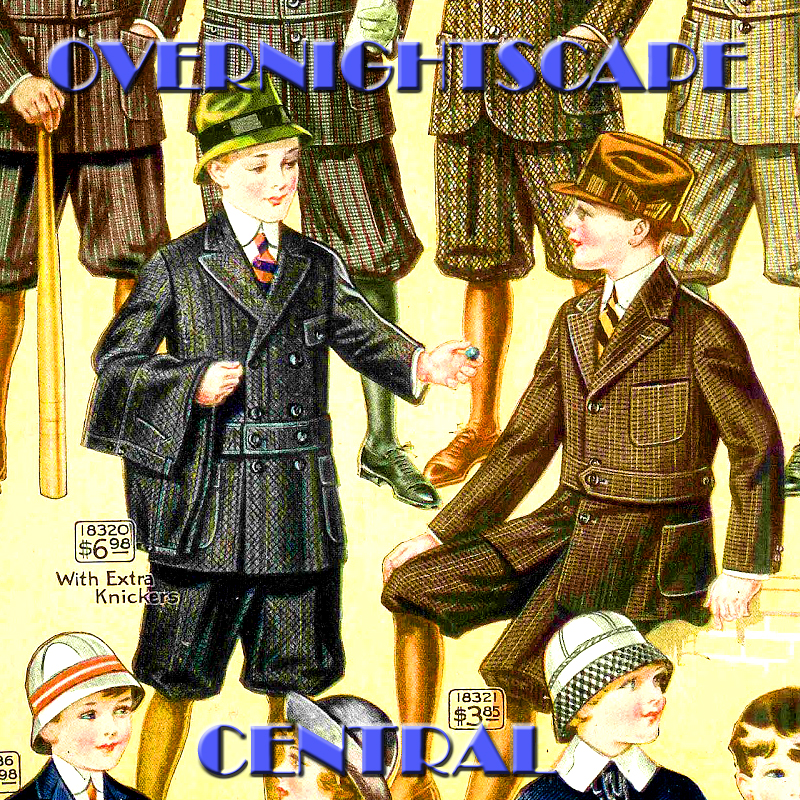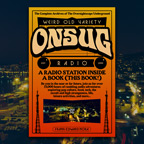Overnightscape Central – The 1950s (1/29/19)
Podcast: Play in new window | Download
 2:48:17 -Â Dave in Kentucky!! Doc Sleaze!! Frank Edward Nora!! Rubinerd!! Chad Bowers!! An amazing audio assault focusing on the 1950s!! PQ Ribber is your host and agent!!
2:48:17 -Â Dave in Kentucky!! Doc Sleaze!! Frank Edward Nora!! Rubinerd!! Chad Bowers!! An amazing audio assault focusing on the 1950s!! PQ Ribber is your host and agent!!
Next: Time and Space
This work is licensed under a Creative Commons Attribution-NonCommercial-NoDerivs 3.0 United States License.
Attribution by PQÂ Ribber. All guests appear courtesy of themselves.
Released January 2019 on The Overnightscape Underground (onsug.com), an Internet talk radio channel focusing on a freeform monologue style, with diverse and clever hosts presenting unique programs, historic archival material, and nocturnal audio.



I too find the Atomic Cafe humourous, but other than it’s comedic snark consider that Duck and Cover is actually excellent advice.
Most nuclear weapons, even modern ones, would be set for air-burst for maximum damage to infrastructure, this almost eliminates fallout risks. Even powerful bombs only annilate a very small, relatively speaking ground zero area.
The comment below from a professor on reddit many years ago is a good explanation of why, Duck and cover would reduce deaths by a minimum of 50%.
There is nothing incorrect for 1951 in “Duck and Cover,” except a lot of unstated caveats. A thin cloth does help protect against thermal effects from an atomic bomb… but only at distances quite far from the actual explosion itself. Hiding under your desk will help you from the blast effects… but only in the <5 psi pressure zone. And so on. Radiation isn't an immediate factor at the distances "Duck and Cover" was advising you of — it is usually the shortest of all of the effects, and if you are close enough to be affected by it you probably are going to be in a world of trouble anyway from the intense thermal and blast. (The problem of residual fallout is a separate issue, one that comes several hours after the blast itself, and not one that would have preoccupied planners in 1951, for reasons I will get to.)
The idea behind something like "Duck and Cover" is that the people directly underneath a nuclear explosion are probably toast. However there are vast numbers of people in a region where the biggest problems will be either painful thermal effects (3rd to 1st degree burns) or "light" blast wave pressure (e.g. 1-4 psi, which will blow your windows in and cause earthquake-like damage).
So the idea is that instead of having, say, 100,000 casualties, with proper Civil Defense one can have, say, only 50,000 casualties. Which may seem like a trivial difference to you, but that's a lot of lives, and the question for the government officials at the time was whether it was irresponsible to not do what they could to save those lives.
Now the criticism of Civil Defense is that it gave people a false hope of survival, and that this could make people more willing to engage in nuclear war. I'm never quite convinced of the former (everyone I've ever talked to from that era seems to have been scared to death by the exercises and to have thought they were nonsense), and the latter is hard to gauge. But given that the Cold War was not a single-nation affair, given that what would happen was not predictable, and given that saving lives is one of the items listed under the government's responsibilities, one can take a non-sinister view of the whole thing.
Where people get confused especially today is that they think that "Duck and Cover" was meant to save everyone, or that it would work if you were directly under the blast point. But that was never really the intent. They didn't ever say, "oh, if you're right under the bomb, you're probably toast." I'm not sure what value it would have done to do that. For something like Civil Defense, you train everyone like they are in a potentially savable state, even if, when the attack actually came (if it ever did), you knew that wasn't going to be the case.
Now, it should be noted also that "Duck and Cover" was designed to be understandable by children, hence it doesn't discuss all of the caveats of survival, and it should also be noted that in 1951 it was assumed that a Soviet attack would be in the form of weapons around the size of the Nagasaki bomb (or maybe 2X larger or so), and in limited numbers. By the late 1950s, much less early 1960s, that strategic situation changed dramatically — there were weapons in the megaton-range (hundreds to thousands of times more powerful than Hiroshima), there were missiles (which give you less warning and no defense), there was a much smaller chance that anyone who was within a danger zone of multiple exploding nuclear bombs was going to get out of it by hiding under their desk or behind a sheet of thin cloth. Even then, though, a good Civil Defense program could cut the total losses down considerably, but the focus became more on fallout, because this would be what exposed the majority of people who were not otherwise in the immediate vicinity of the bomb explosion. (Fallout from thermonuclear weapons can cover vast areas and make them dangerous to be in for several days or weeks, and dangerous to live in for many decades.) Note that in the image I've linked to, they've given estimates as to deaths: 62 million dead from the bombs alone; 46 million dead from fallout if they don't take shelter correctly. Those 46 million are theoretically preventable deaths. That's a lot of people!
When teaching about Civil Defense, I like to juxtapose "Duck and Cover" with a 1956 pamphlet, "Mortuary Services in Civil Defense", just to show the difference in what talking about the practical effects of nuclear weapons looks like when talking to the "lay populace" and when talking to professionals. Granted, the difference in time is important, but imagining Bert the Turtle using mechanical excavators to dig trench graves seems to help the probable realities of this hit home.
Comment by Chad Bowers — January 31, 2019 @ 9:58 am